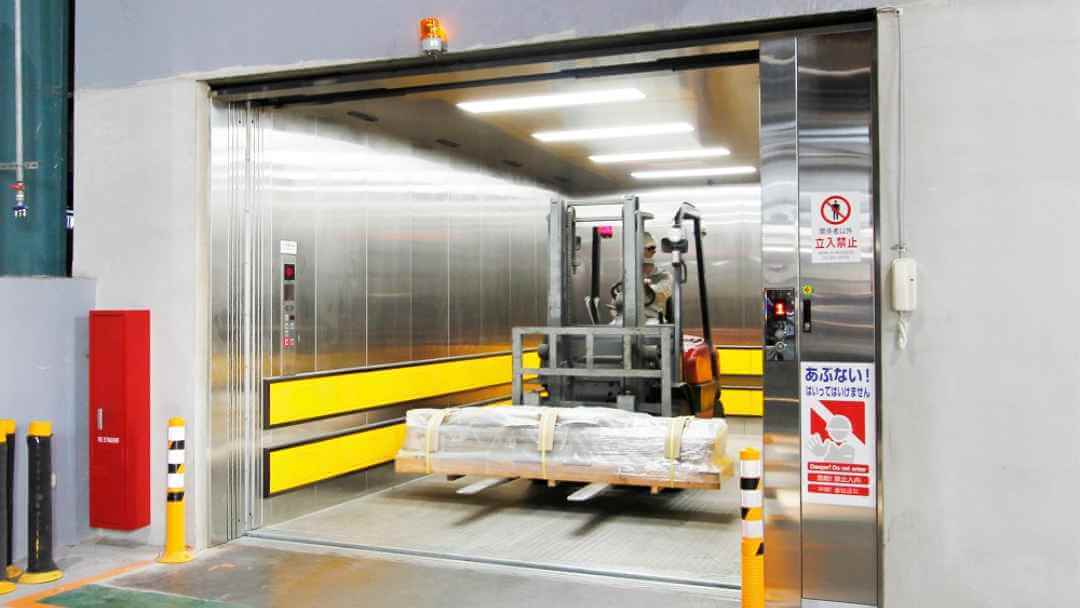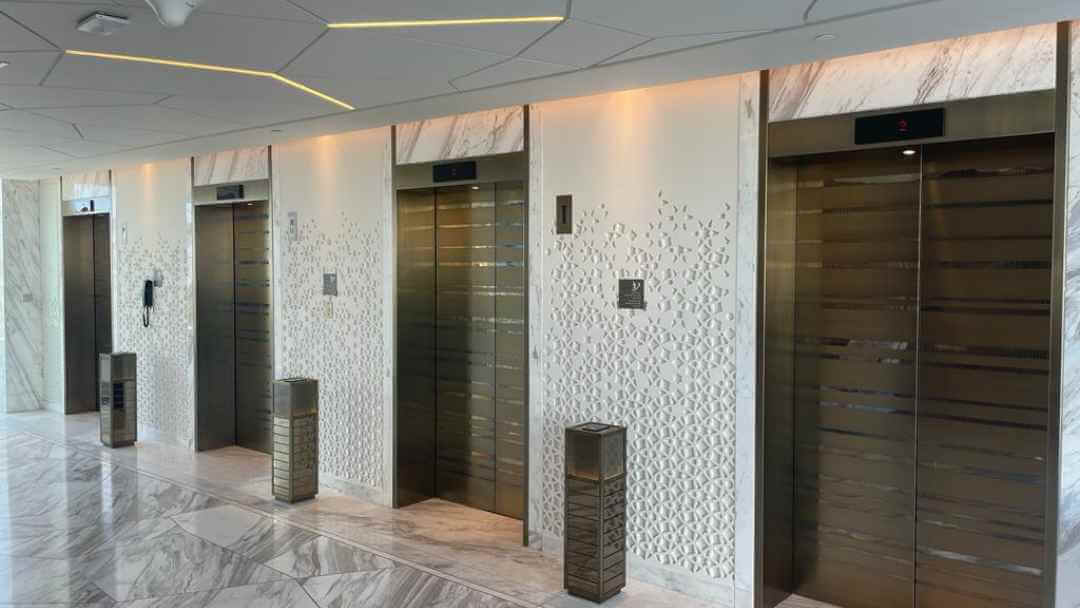Goods Passenger Lifts – For Efficient Vertical Transportation of Cargo
Learn all about Goods passenger lifts and the benefits we offer for high-capacity transport in commercial and residential buildings.

Muneer Ahammed | Updated February 07, 2024
Are you tired of the hassle and time-consuming process of transporting goods and people in commercial or residential buildings?
Say goodbye to that problem with the innovative solution of Goods Passenger Lifts.
These versatile lifts are designed to transport both goods and people efficiently and effectively, providing a convenient solution for high-capacity transport.
Keep reading to learn all about these kinds of lifts and the benefits they offer.
Goods Passenger Lifts – Transport Goods & People Effortlessly

A goods passenger lift is a type of lift that is designed to transport both goods and people.
This type of lift is equipped with a spacious cabin and a loading platform, making it possible to transport goods and people simultaneously.
The lift can be used to transport large and heavy items, such as furniture and appliances, while also accommodating people who need to access different floors in the building.
The Benefits of Installing a Goods Passenger Lift
1. Increased Efficiency
They provide a convenient and efficient solution for high-capacity transport. They allow for both goods and people to be transported simultaneously, saving time and effort compared to using separate lifts.
2. Accommodates Large and Heavy Items
The lift is equipped with a spacious cabin and loading platform, making it possible to transport large and heavy items such as furniture and appliances. This eliminates the need for manual handling and reduces the risk of injury.
3. Improved Accessibility
These Lifts can increase accessibility for people with mobility issues, allowing them to access different floors in the building with ease. This can be especially important in residential buildings and can add value to the property.
4. Increased Safety
They are equipped with safety features such as emergency brakes and intercom systems, ensuring the safety of both goods and people during transport.
5. Energy-Efficient
The energy efficiency of the lift can have a significant impact on a building’s energy costs. By choosing a lift with energy-efficient features, building owners can reduce their energy expenses and become more environmentally conscious.
6. Versatile
They come in various types, including Dumbwaiter Lifts, Freight Lifts, and Passenger and Goods Lifts, allowing for a customized solution for each building’s needs.
- Provides a convenient and efficient solution for high-capacity transport
- Can transport both goods and people simultaneously, saving time and effort
- Can accommodate large and heavy items, making it easier to move goods and equipment
- Increases accessibility for people with mobility issues
- Adds value to commercial and residential buildings
Types of Goods Passenger Lifts
Dumbwaiter Lifts
These lifts are designed for transporting light goods and are commonly found in restaurants and cafes.
Freight Lifts
These lifts are designed for transporting heavy goods and are commonly found in commercial buildings.
Goods and Passenger Lift
These lifts are designed for transporting both goods and people, making them ideal for residential and commercial buildings.
Electric passenger lift
An electric passenger and goods lift is a type of vertical transportation system that is used to transport people within a building. It is powered by electricity and typically consists of a cab or car that moves up and down a shaft or hoistway, supported by guide rails.
How to Choose the Right Goods Passenger Lift for Your Building?

When choosing a passenger lift for your building, there are several factors to consider, including:-
1. Speed: Consider the speed of the lift, as well as the number of stops it needs to make to reach different floors.
2. Safety Features: Make sure the lift is equipped with safety features, such as emergency brakes and intercom systems.
3. Energy Efficiency: Consider the energy efficiency of the lift, as this can have a significant impact on your building’s energy costs.
4. Goods lift Capacity: This refers to the maximum weight that the elevator can carry, including the weight of passengers, luggage, and any other items. Make sure to choose an elevator that has a load capacity that meets your needs.
5. Weight Limit: This refers to the maximum weight that each individual passenger or item can weigh. Make sure to choose an elevator with a weight limit that accommodates the needs of your building’s residents or customers.
6. Size: The size of the elevator is determined by the number of passengers it can accommodate and the amount of space required for the equipment. Make sure to choose an elevator that fits within the available space in your building and can accommodate the number of passengers you need to transport.
7. Power Requirements: The power requirements of an elevator depend on its size, load capacity, and speed. Make sure to choose an elevator that meets the power requirements of your building, and ensure that there is a sufficient power supply to operate the elevator.
Real-World Examples of Goods Passenger Lift Usage:
In commercial buildings, it is used for:
- Transporting office equipment, supplies, and packages
- Allowing employees to easily transport heavy equipment and files between floors
In residential buildings, it is used for
- Transporting furniture and household goods during moving processes
- Providing easy access to different floors for people with mobility issues
- Increasing accessibility and adding value to the building.
Don’t miss this opportunity to learn more about how our elevators can benefit your building!
Safety features
In these lifts typically include emergency stop buttons, door interlocks, overspeed governors, and emergency power supply systems. Some lifts may also feature fire-resistant materials and emergency lighting.
Maintenance and Repair
AMC and repair requirements for these lifts vary depending on the model and frequency of use, but regular inspections and tests are necessary to ensure the lift is functioning properly and safely. It is recommended to have a lift-serviced at least once a year by a qualified technician.
Cost of Installing
Installing a passenger lift cost depends on factors such as the size and specifications of the lift, the type of building it is being installed in, the passenger lift parts and any additional features required.
The potential return on investment can depend on the specific use of the lift, such as increasing accessibility for disabled individuals or increasing efficiency in a warehouse.
In general, the return on investment can be seen in the form of increased productivity and customer satisfaction.
In conclusion, goods passenger lifts are an essential component in ensuring the safe and efficient movement of goods and passengers in a building. The safety features included in these lifts, such as emergency stop buttons, door interlocks, overspeed governors, and emergency power supply systems, provide a high level of safety for users.
Regular maintenance and repair by a qualified technician are crucial in ensuring that these lifts continue to operate safely.
Royal Fuji plays a crucial partner in ensuring safe and efficient vertical transportation of goods and passengers in the UAE.
Offering a wide range of lift solutions, we are equipped with the knowledge, expertise, and resources to design, install, and maintain these essential systems.
By prioritizing safety, reliability, and customer satisfaction, a lift company provides valuable services and products to its clients. Whether it’s for a warehouse, hospital, or residential building, we play a vital role in ensuring the smooth operation of everyday life and business. With our commitment to providing the highest quality lift solutions, we are a trusted and valuable resource for those seeking to upgrade their buildings.
Frequently asked questions
1. What is a goods/freight elevator?
A goods/freight elevator is a type of elevator designed to transport goods, packages, and materials in a commercial or industrial setting.
2. What is the difference between a goods/freight elevator and a passenger elevator?
A goods/freight elevator is designed to handle heavy loads and has a larger cab and doors to accommodate larger items. Passenger elevators, on the other hand, are designed for people and have smaller cabs and doors.
3. What is the weight capacity of a goods/freight elevator?
The weight capacity of a goods/freight elevator can vary depending on the model but typically ranges from 2000 to 10000 pounds or more.
4. What safety features are included in a goods/freight elevator?
Goods/freight elevators typically include safety features such as emergency brakes, interlocks, emergency stop buttons, and overspeed governors.
5. How much space is required for a goods/freight elevator?
The space required for a goods/freight elevator can vary depending on the size and type of lift but generally requires a shaft and machine room. It is best to consult with a vendor for more specific information.

Muneer Ahammed
Sales & Operation Manager - Royal Fuji
Mr. Muneer Ahammed holds the position of Sales & Operation Manager at Royal Fuji and possesses 16 years of experience in the vertical transportation industry. For any inquiries related to goods passenger lifts, please do not hesitate to reach out to him.
